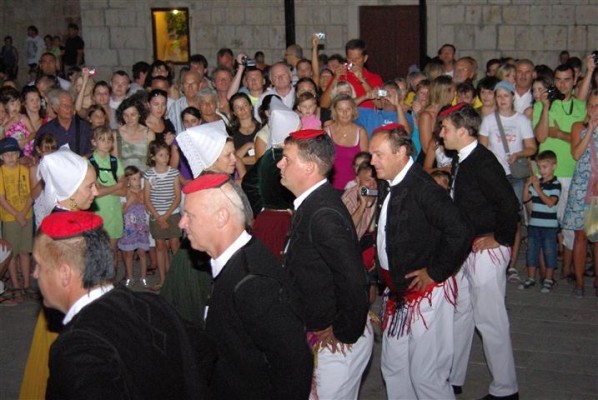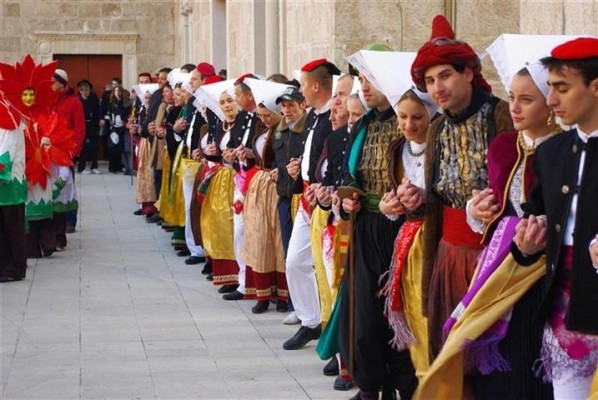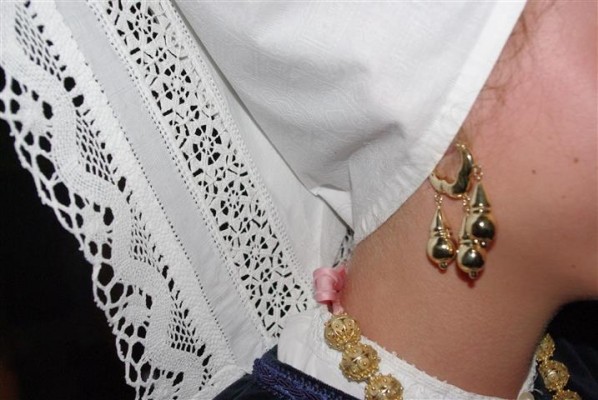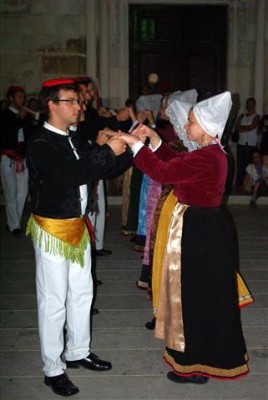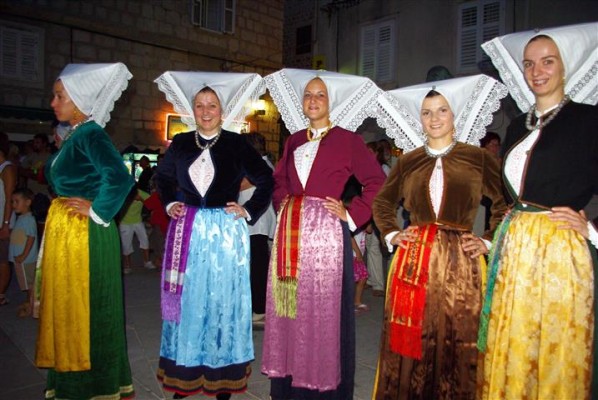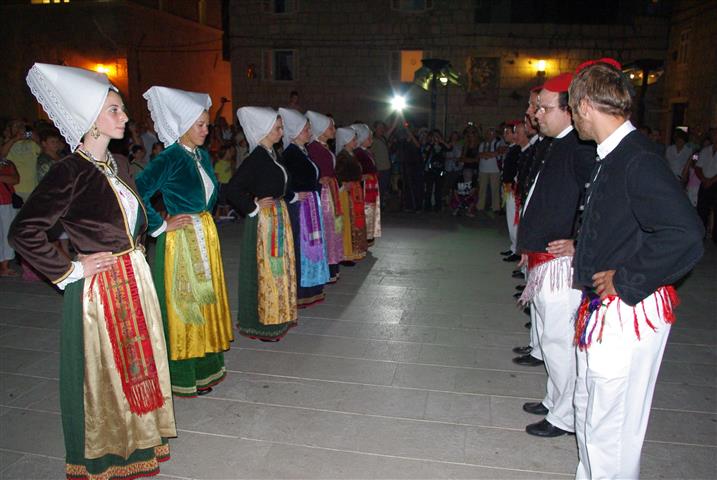
The folk attire of Pag, renowned for its beauty, has not changed for centuries. The traditional array and ornamentation have been handed down from generation to generation as a token of the islanders’ great love for their cultural and historical heritage. A relief image of the Blessed Virgin Mary in the lunette of the parish church portal as the patron saint of the islanders wearing their traditional attire shows that the Pag costume had its origins in the Late Gothic/Early Renaissance. The woman’s costume consists of a blouse, skirt and an apron. The blouse is worn as an undergarment tucked into a woollen skirt and consists of an upper (opleća) and lower (stana) part, connected at the waistline. The front neck-to-waist opening is decorated with intricately crafted lace. A short jacket with long sleeves is worn over the blouse, so that only the front of the shirt, sleeves and decorated parts of the blouse are visible. The skirt is made of fine home-woven linen which, depending on the season, occasion and taste, can be dyed red, yellow, green, brown… It consists of two parts – a bodice and a skirt, connected at the waistline. The skirt has numerous fine vertical folds, while the horizontal fold (soc) is about 30-40 cm from the hem decorated with a thin ribbon (pasaman). A silk apron (travesa or traversa) covers the front of the skirt, almost all the way down to the hem. In the past, the skirt and the apron were fastened with a belt, into which a silk scarf (facol) was tucked. The women of Pag wear stockings (kalcete) in the same colour as the skirt and shallow shoes (gondolete). They cover their heads with thin linen kerchiefs (pokrivaca) trimmed with teg lace and fastened with decorative filigree hair pins.Walking the streets of the town of Pag, you may meet elderly women dressed in rather short black skirts and black blouses, and wrapped in black scarves during winter months. This attire, worn daily and on holidays and festivities, consists of a blouse, skirt (fuštan), apron (travesa) and jacket (jaketin). The festive version is made of finer linen and decorated with a necklace consisting of filigree silver or gold-plated beads (peruzini) and earrings with three round or pear-shaped filigree pendants (rocini od tri perle).
The festive male costume consists of a white linen shirt, white trousers (brageše), waistcoat (krožat) and a draped coat (kaparan). A silk scarf (facol) adorns the waistline, and a small red cap covers part of the head. Men also wear socks (kalcete) and shoes (postole).The islanders were best protected by a valuable and beautiful, though rather forgotten, item of apparel – the kaban, a wide cloak with a hood, adorned with blue or red lining. The unique Pag costume is renowned throughout Europe, while the pokrivaca, teg and the lace of Pag are listed as protected cultural goods of the Republic of Croatia, with the label Croatian Original.








